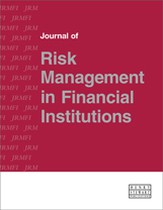Modelling longevity risk in practice
Abstract
In this paper there is a comparison of different models used in practice for calibrating future developments of mortality rates and a discussion of their key shortfalls and issues. One of the main differences between the models lies in the width of the distribution for the forecast. The results are further compared to the standard model in Solvency II and it is shown that from the perspective of time consistency all models are superior to the standard model.
The full article is available to subscribers to the journal.
Citation
Schiller, Frank and Lepschi, Susanne (2011, June 1). Modelling longevity risk in practice. In the Journal of Risk Management in Financial Institutions, Volume 4, Issue 3. https://doi.org/10.69554/JVUN7252.Publications LLP
